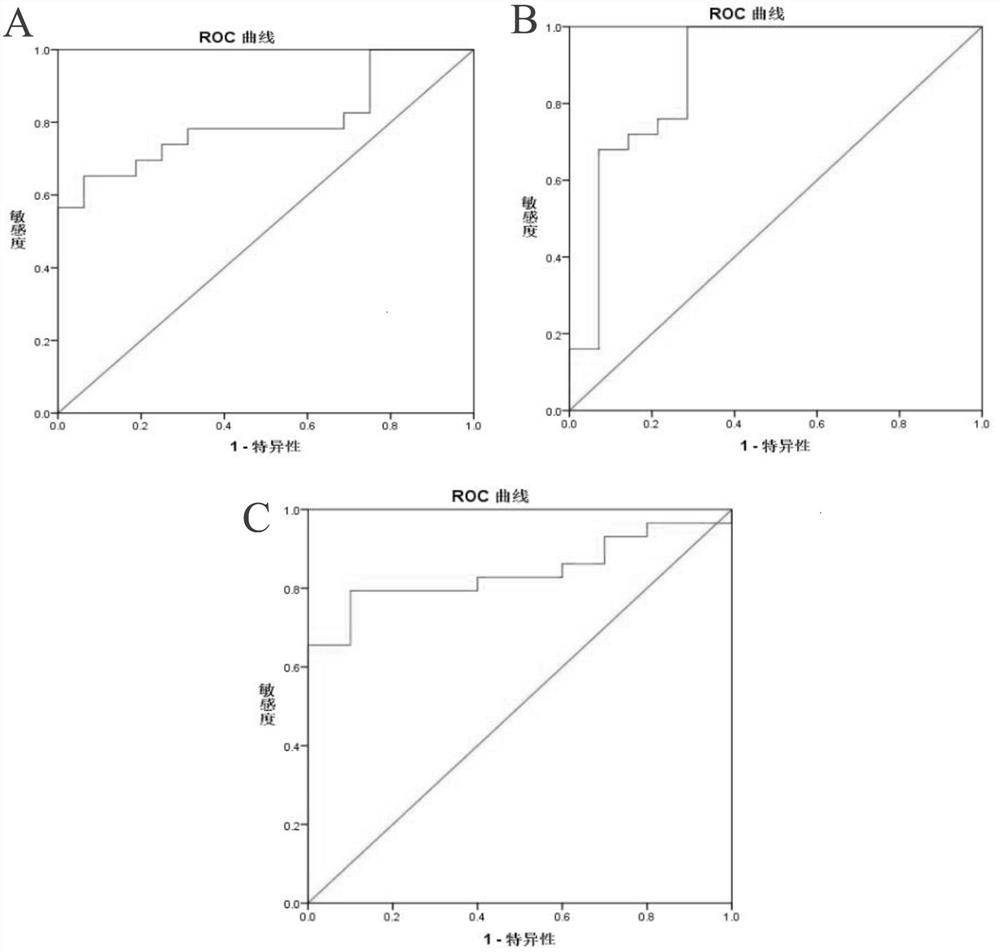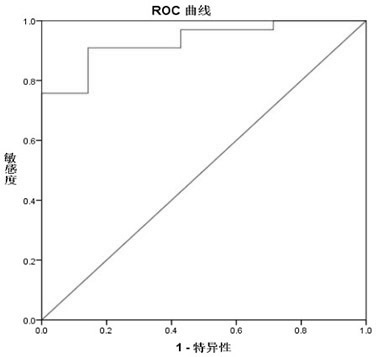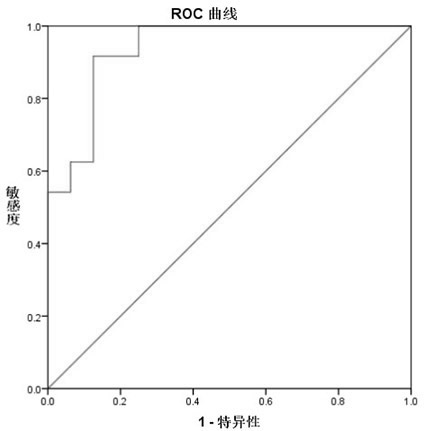Esophageal squamous cell carcinoma early screening marker based on metabonomics and kit thereof
A technology for esophageal squamous cell carcinoma and detection reagents, which is applied in the field of medicine and biology, can solve the problems of less than 2% detection rate of esophageal squamous cell carcinoma, no significant improvement in mortality rate, etc., achieves good diagnosis effect, good differentiation effect, and improves detection rate Effect
- Summary
- Abstract
- Description
- Claims
- Application Information
AI Technical Summary
Problems solved by technology
Method used
Image
Examples
Embodiment 1
[0031] Example 1: Screening of serum differential metabolic markers for esophageal squamous cell carcinoma
[0032] 1. Collection of serum samples
[0033] A total of 79 serum samples were collected from the Henan Key Laboratory of Esophageal Squamous Cell Carcinoma, the First Affiliated Hospital of Zhengzhou University, including 39 cases of normal human serum (normal control group) and 40 serum samples of patients with esophageal squamous cell carcinoma (esophageal squamous cell carcinoma group). Sera from 39 cases of normal people came from the normal physical examination population of the physical examination center of the laboratory's cooperative hospital, without any tumor-related evidence. Forty sera from patients with esophageal squamous cell carcinoma were obtained from patients with early stage (stage 0+stage I) esophageal squamous cell carcinoma confirmed by histopathology, and none of them received radiotherapy or chemotherapy.
[0034] 2. Experimental method
[...
Embodiment 2
[0057] Example 2: Evaluation of the ability of differential metabolite diagnosis to distinguish patients with esophageal squamous cell carcinoma from healthy people
[0058] 1. The ability of a single differential metabolite diagnosis to distinguish patients with esophageal squamous cell carcinoma from normal people:
[0059] N-o-cresyl glycine, D-sorbose in the esophageal squamous cell carcinoma group (40 patients with esophageal squamous cell carcinoma) and normal control group (39 normal persons) serum samples detected based on UPLC-Q / TOF-MS in Example 1 The content data of alcohol and N-acetyl-D-mannosamine were analyzed, and the receiver operating curve (ROC curve) was used to evaluate the ability of each differential metabolite to diagnose and distinguish patients with esophageal squamous cell carcinoma from normal people.
[0060] The ROC curve of N-o-cresyl glycine, D-sorbitol, and N-acetyl-D-mannosamine alone to distinguish patients with esophageal squamous cell carci...
Embodiment 3
[0084] Example 3: Application of three differential metabolites in the screening of esophageal squamous cell carcinoma
[0085] 1. Collection of serum samples
[0086] In addition, the sera of 20 patients with esophageal squamous cell carcinoma and 20 normal people were selected from the Key Open Laboratory of Esophageal Squamous Cell Carcinoma in Henan Province, the First Affiliated Hospital of Zhengzhou University; among them, the sera of 20 patients with esophageal squamous cell carcinoma came from early (Stage 0+Stage I) patients with esophageal squamous cell carcinoma did not receive radiotherapy or chemotherapy. The serum of 20 normal people came from the normal physical examination population of the physical examination center of the laboratory's cooperative hospital, without any evidence of tumor-related.
[0087] 2. Analysis method
[0088] According to the UPLC-Q / TOF-MS technology described in Example 1, three metabolites N-o-cresyl glycine, D-sorbitol, N-acetyl -D...
PUM
 Login to View More
Login to View More Abstract
Description
Claims
Application Information
 Login to View More
Login to View More - R&D
- Intellectual Property
- Life Sciences
- Materials
- Tech Scout
- Unparalleled Data Quality
- Higher Quality Content
- 60% Fewer Hallucinations
Browse by: Latest US Patents, China's latest patents, Technical Efficacy Thesaurus, Application Domain, Technology Topic, Popular Technical Reports.
© 2025 PatSnap. All rights reserved.Legal|Privacy policy|Modern Slavery Act Transparency Statement|Sitemap|About US| Contact US: help@patsnap.com



